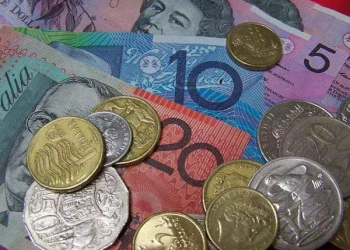EUR/USD remains in a consolidation phase, hovering around the 1.0300 mark during Thursday’s European session. The currency pair is trading sideways, closely tracking the movements of the US Dollar (USD), with the US Dollar Index (DXY) struggling to recover losses from Wednesday. The DXY is holding around 109.15, attempting to regain ground after volatile reactions to mixed US Consumer Price Index (CPI) data for December.
Mixed Inflation Data Sways Fed Outlook
The latest US CPI report revealed a mix of inflationary signals. While headline inflation rose in line with expectations, the core inflation figure increased at a slower pace than anticipated. This divergence in inflation data has prompted traders to reassess expectations for the Federal Reserve’s (Fed) monetary policy, particularly regarding future rate cuts.
According to the CME FedWatch tool, market participants now anticipate multiple interest rate cuts this year, a shift from the previous consensus of just one cut before the inflation data was released. The outlook remains fluid, however, as Fed officials continue to express concerns about inflation, particularly with the uncertainty surrounding President-elect Donald Trump’s administration policies. New York Fed President John Williams stated that while disinflation is underway, significant uncertainty remains, particularly regarding fiscal, trade, immigration, and regulatory changes.
US Data Awaited for Market Direction
Investors are also awaiting the release of the US Initial Jobless Claims data for the week ending January 10, along with the December Retail Sales report, both set to be released at 13:30 GMT. These figures could provide further insights into the US economic health and influence the direction of the USD.
Eurozone Economic Pressures and ECB Rate Cuts
On the Euro side, EUR/USD’s sideways movement is also influenced by mixed performance of the Euro (EUR) against other major currencies. The broader outlook for the Euro remains bearish, driven by expectations that the European Central Bank (ECB) will continue its path of gradual rate cuts. A recent Reuters poll, conducted between January 10 and 15, shows that all 77 economists expect the ECB to reduce its Deposit Facility rate by 25 basis points (bps) to 2.75% in the upcoming January meeting. Furthermore, 60% of economists predict additional rate cuts by mid-year, each by 25 bps.
ECB officials, including François Villeroy de Galhau, Governor of the Bank of France, have indicated a willingness to lower the deposit rate further, possibly to 2% by the summer, suggesting confidence that inflation has been largely controlled. This would also support economic financing by lowering borrowing costs.
Concerns Over US Tariffs and Eurozone Vulnerability
The Eurozone’s economic outlook remains under pressure, as concerns grow that potential US trade policies, particularly increased import tariffs under Trump’s administration, could significantly impact the export-driven economy. This uncertainty is keeping the Euro under pressure against the USD.
Technical Analysis: EUR/USD Faces Bearish Outlook
EUR/USD is holding steady near the 1.0300 level, recovering from the over-two-year low of 1.0175 reached on Monday. The pair shows signs of divergence, with the 14-day Relative Strength Index (RSI) forming a higher low around 35.00, despite lower lows in the price action. However, the overall outlook remains bearish, as all short-to-long-term Exponential Moving Averages (EMAs) are sloping downward.
The key support level to watch remains Monday’s low at 1.0175, while resistance is found at the January 6 high of 1.0437.
Related Topics:



























